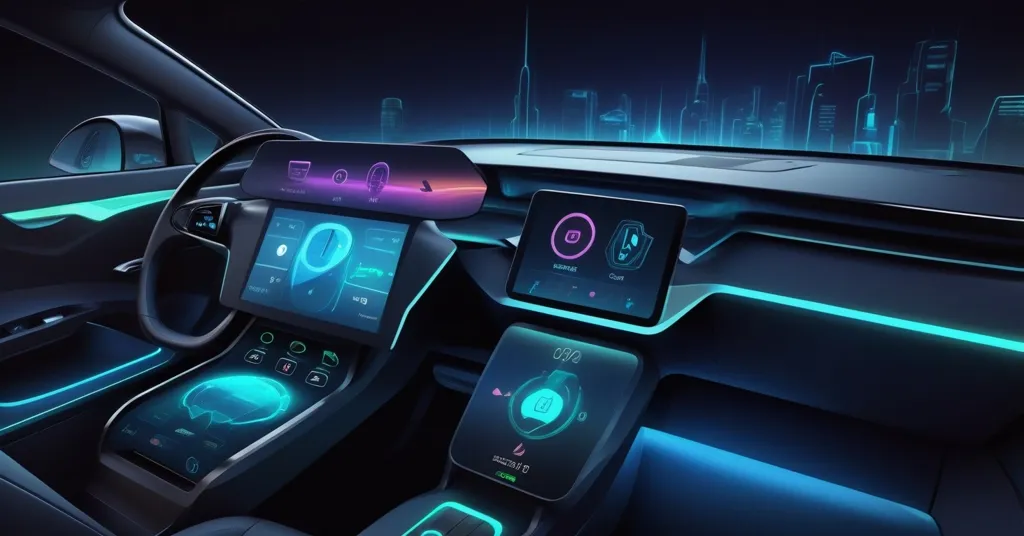Tesla Tests Apple CarPlay: A Win for User Control with Crypto Parallels

Tesla Tests Apple CarPlay: A Shift Toward User Control and Tech Disruption
Tesla, the electric vehicle heavyweight, has quietly started internal testing of Apple CarPlay support, a stunning reversal after years of digging in their heels against the popular smartphone integration tool. This move, driven by slumping sales, consumer pressure, and a changing competitive landscape, signals a crack in Tesla’s infamous walled garden—and raises intriguing parallels to the user empowerment ethos we champion in the Bitcoin and blockchain space.
- Testing in Progress: Tesla is internally testing Apple CarPlay, breaking from its long-standing resistance to external systems.
- Consumer Push: A third of car buyers view the lack of CarPlay as a deal-breaker, per a 2024 McKinsey study.
- Controlled Rollout: CarPlay will function in a contained window within Tesla’s interface, steering clear of core features like Full Self-Driving (FSD).
Tesla’s Walled Garden: A History of Resistance
For over a decade, Tesla has played the role of the ultimate gatekeeper, much like the legacy financial systems Bitcoin seeks to upend. Their proprietary infotainment system—a sleek, all-in-one dashboard interface controlling everything from navigation to media playback—has been central to their brand as a tech company masquerading as a carmaker. CEO Elon Musk hasn’t minced words about his distrust of Apple, publicly slamming their App Store policies as monopolistic and eyeing their now-defunct Titan electric vehicle project as a direct threat. Why let a rival like Apple into the driver’s seat—literally or figuratively—when you’ve built a fortress of your own design? This mindset mirrors the centralized control Bitcoin maximalists rail against, where user choice often takes a backseat to ecosystem dominance.
Yet, Tesla’s resistance wasn’t just about pride or rivalry. Handing over even a sliver of control to Apple risked compromising their tightly integrated features, like over-the-air software updates or the ambitious Full Self-Driving (FSD) system—an advanced autopilot aiming to handle driving with minimal human input. The fear? Apple’s access to Tesla drivers could erode brand loyalty or, worse, siphon off valuable user data. It’s a valid concern, echoing debates in the crypto world about how much access centralized tech giants should have to personal information. But as consumer expectations evolve, even the most stubborn fortresses face pressure to open their gates.
Why the Pivot Now? Sales Slump and User Demand
Let’s cut into the timing of this shift. Tesla’s sales have taken a noticeable dip in 2024, with some analysts pointing directly at the absence of smartphone integration as a key culprit. A McKinsey & Co. study from this year drives the point home: roughly a third of car buyers consider the lack of Apple CarPlay or Android Auto a deal-breaker. That’s not a niche complaint; it’s a mass-market revolt. Add to that Apple’s official exit from the EV race with the cancellation of their Titan project earlier this year, and the competitive friction between the two giants has cooled. Tesla no longer has to worry about Apple rolling out a rival car—just a rival user experience. For more on this development, check out the detailed report on Tesla’s testing of Apple CarPlay support.
This scenario isn’t unlike how Bitcoin gained traction, not through top-down decrees, but through relentless user demand for an alternative to broken financial systems. Tesla, for all its innovation, can’t ignore the reality that drivers live on their smartphones. Ignoring CarPlay in 2024 is akin to a bank refusing online banking a decade ago—stubborn to the point of self-sabotage. The question isn’t why Tesla is testing CarPlay now; it’s why the hell they waited this long. And for our crypto-minded readers, it’s a reminder that even disruptors like Tesla must bend to the will of the masses when the pressure mounts.
CarPlay Implementation: A Cautious Toe in the Water
So, what exactly is Tesla cooking up? Apple CarPlay, for those new to the term, is a software layer that mirrors your iPhone’s key apps—Maps, Spotify, Messages—onto a car’s dashboard screen, offering a safer, more familiar way to stay connected on the road. Unlike Tesla’s native system, which locks you into their ecosystem, CarPlay brings the personal touch of your phone directly to your drive. But don’t expect Tesla to hand over the keys entirely. Sources with direct knowledge of the project reveal that CarPlay will run in a “windowed mode” within Tesla’s existing interface—think of it like running a separate app on your computer desktop, contained and unable to mess with the broader system.
This means CarPlay won’t touch Tesla’s crown jewels, like Full Self-Driving (FSD) or vehicle diagnostics. It’s a guest, not a housemate, and Tesla’s making damn sure it stays that way. They’re also opting for the standard version of CarPlay, recently updated in iOS 26 with handy widgets, rather than the more invasive CarPlay Ultra. The Ultra version, adopted by only a few like Aston Martin, can control deeper car functions like climate settings or seat adjustments—a step too far for Tesla, who’d rather keep Apple on a short leash. And for the neat freaks among us, no need to fret about cable clutter; Tesla’s going wireless with CarPlay connectivity.
This cautious approach reeks of Tesla’s obsession with control, but it’s a double-edged sword. It meets user demand without fully surrendering the ecosystem—a move Bitcoin purists might respect for its nod to sovereignty. Still, let’s not kid ourselves: half-measures like this could leave drivers frustrated if the integration feels clunky or limited. Tesla’s basically saying, “Come in, Apple, but don’t touch the fancy china—or the FSD controls.”
Android Auto Snub: Bold Move or Blunder?
Here’s where Tesla’s gamble gets spicier: they’re not touching Google’s Android Auto, CarPlay’s direct competitor, at least not yet. With Android commanding over 70% of the global smartphone market according to 2023 Statista data, that’s a hell of a lot of potential buyers left out in the cold. Why prioritize Apple? It could be a nod to their user base—iPhone owners often skew toward premium purchases, aligning with Tesla’s demographic. Or maybe it’s tied to Musk’s warmer ties with Apple, especially given recent coziness around platforms like X. Whatever the reason, it’s a risky play in an already cutthroat EV market.
For our audience, this echoes debates in crypto about exclusivity versus accessibility. Bitcoin maximalists might argue for sticking to one “pure” system, but altcoins often fill gaps for broader adoption. Tesla’s Android snub could alienate a massive chunk of drivers, much like ignoring altcoin users limits blockchain’s reach. If sales keep sliding, expect this decision to come under fire—and deservedly so. Tesla’s track record on feature rollouts is a damn mess; don’t bet on Android Auto support arriving anytime soon to fix the fallout.
Industry Context: A Battle Over Digital Turf
Zooming out, Tesla’s flirtation with CarPlay lands in a messy industry landscape. While Tesla takes a middle-ground approach, General Motors has gone full rebel, ditching CarPlay entirely to push their own proprietary system. GM’s betting that total control over the driver experience will lock in loyalty, even if it pisses off buyers in the short term. Meanwhile, CarPlay Ultra struggles for traction—big names like Audi have backtracked on earlier commitments, and Mercedes-Benz isn’t jumping on board either. Automakers are clearly wary of ceding too much ground to tech giants like Apple, a tension that mirrors crypto’s fight against centralized overlords.
Tesla’s windowed integration might be the sweet spot: give users what they want without handing Apple the steering wheel. But it also highlights a broader tug-of-war over who owns the digital experience in vehicles. For us in the Bitcoin space, it’s a familiar story—user choice versus ecosystem dominance. Just as blockchain challenges Big Tech’s data monopolies, Tesla’s partial concession to CarPlay could signal a slow shift toward prioritizing drivers over pure control. Or it might just be a desperate sales grab. You decide.
Crypto Parallels: User Sovereignty and Beyond
Now, let’s tie this to the ethos we live by at Let’s Talk, Bitcoin. Tesla’s pivot, however cautious, reflects a core principle of decentralization: user demand can force even the most rigid systems to adapt. Much like Bitcoin emerged to give individuals power over their finances, Tesla bending to consumer will over CarPlay suggests that tech disruption often starts with the masses, not the C-suite. Their obsession with controlling the ecosystem—keeping CarPlay in a box—also mirrors Bitcoin’s resistance to centralized interference, ensuring no single entity can dominate.
Looking ahead, could this open doors for blockchain in car tech? Imagine decentralized infotainment systems where drivers own their data via blockchain, preventing Apple or Tesla from turning your driving habits into a goldmine. Or picture a peer-to-peer app store for vehicle software, bypassing tech giant gatekeepers. Tesla’s software-first approach, with over-the-air updates, already hints at how such user-updatable, decentralized systems could work in other industries. It’s speculative, sure, but the seeds of user sovereignty are there—and that’s a concept every crypto enthusiast can get behind.
What’s Next for Tesla and Tech Disruption?
As for when we’ll see CarPlay in Teslas, don’t hold your breath. While a rollout is floated for the coming months, Tesla’s history with promised features is notorious—delays and outright cancellations are par for the course. If they pull this off, though, it could spark a ripple effect, nudging other automakers to rethink their stance on smartphone integration. More importantly, for us watching from the crypto sidelines, it’s a case study in how user-driven tech can challenge entrenched control. Could Tesla’s concession signal a future where even car tech bows to the decentralized will of the masses? Only time will tell, but the undercurrent of empowerment is hard to ignore.
Key Questions and Takeaways
- What’s behind Tesla’s sudden interest in Apple CarPlay?
A mix of slumping sales, Apple’s 2024 exit from the EV race, and intense consumer pressure—about a third of buyers won’t consider a car without CarPlay, per McKinsey data. - How does Tesla plan to integrate CarPlay without losing control?
CarPlay will run in a contained window within Tesla’s interface, blocked from core systems like Full Self-Driving (FSD), preserving their ecosystem dominance. - Why ignore Android Auto, and what’s the potential cost?
Tesla may be targeting Apple’s premium user base or leveraging strategic ties, but snubbing Android’s 70% global market share risks alienating a huge swath of EV buyers. - How does this reflect a crypto-like push for user sovereignty?
Tesla yielding to driver demand parallels Bitcoin’s rise through user empowerment, showing even tech giants must adapt when the masses demand choice over control. - Could blockchain play a role in future EV infotainment tech?
Potentially, by enabling decentralized, privacy-focused systems where drivers own their data, preventing tech giants from monopolizing the in-car digital experience.



